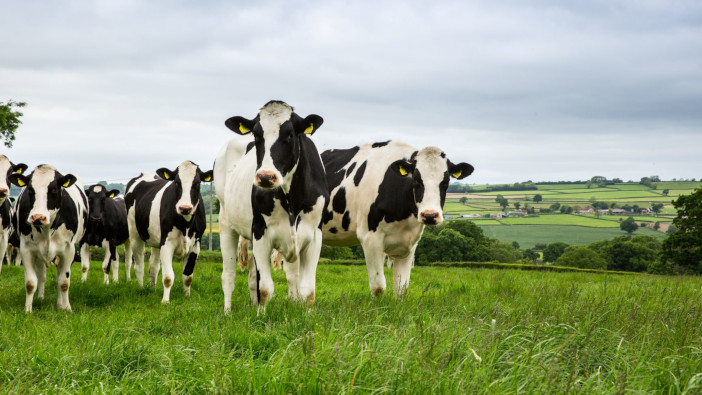Grazing provides an excellent opportunity to reduce feed and labour costs through the spring and summer months, but Trident Feeds is warning farmers that these savings come with a series of challenges.
For dairy producers to make the best use of the grass, variability in fresh grass needs to be understood and balanced correctly to support milk yields and constituents during grazing.
High sugar levels and neutral detergent fibre in early spring grasses can lead to the risk of sub-acute ruminal acidosis (SARA), while also contributing to seasonal falls in butterfat.
“Turnout brings significant dietary changes, and it is important that rations are balanced accordingly to ensure nutrients from grass can be utilised by the cows, and performance and profitability can be maintained and improved,” said Charlotte Ward, Trident Feeds ruminant technical manager.
According to Ms Ward, the regional variation in grass reports also highlight the importance for farms to undertake milk yields from grazing analysis.
Rumen health
“There is still heavy reliance on buffer rations at this time of year as grass gets going. Focus needs to be on rumen health to ensure grass intakes are maximised, that grass is utilised, and to help protect butterfats,” she said.
Acetate is a volatile fatty acid required for butterfat and is produced when dietary fibre ferments in the rumen. Factors that decrease fibre digestibility or intake will therefore have a negative impact on butterfat production.
“It is vital to prevent large changes in rumen pH as this leads to a drop in the ability of microbes to digest the fibre, resulting in a subsequent drop in butterfat production,” explained Ms Ward.
“It also puts the animal at risk of SARA which may cause a drop in yield, increased incidence of lameness or even death.”
Nutritional management
Good rumen health can be encouraged by ensuring adequate levels of digestible fibre and long fibre are in the ration. Chopped straw is a useful addition and should be no longer than muzzle width. Live yeasts and rumen buffers are also helpful to reduce the risk of SARA and milk fat depression.
“Consider using rumen-protected proteins such as NovaPro to supply quality digestible undegraded (DUP) by-pass protein to meet metabolisable protein (MP) requirements, without overdoing the high crude protein levels in spring grass,” added Ms Ward.
“Additionally, high C16 fat products, such as Butterfat Extra, can be incorporated easily into well-balanced rations, and can show immediate improvements to milk fat percentages, with responses of up to 0.3 per cent increase in butterfat production.
“Feeding a buffer ration at turnout can help support optimal rumen health, while the addition of the C16-protected fatty acids contained in Butterfat Extra can also help drive butterfat production,” concluded Ms Ward.


